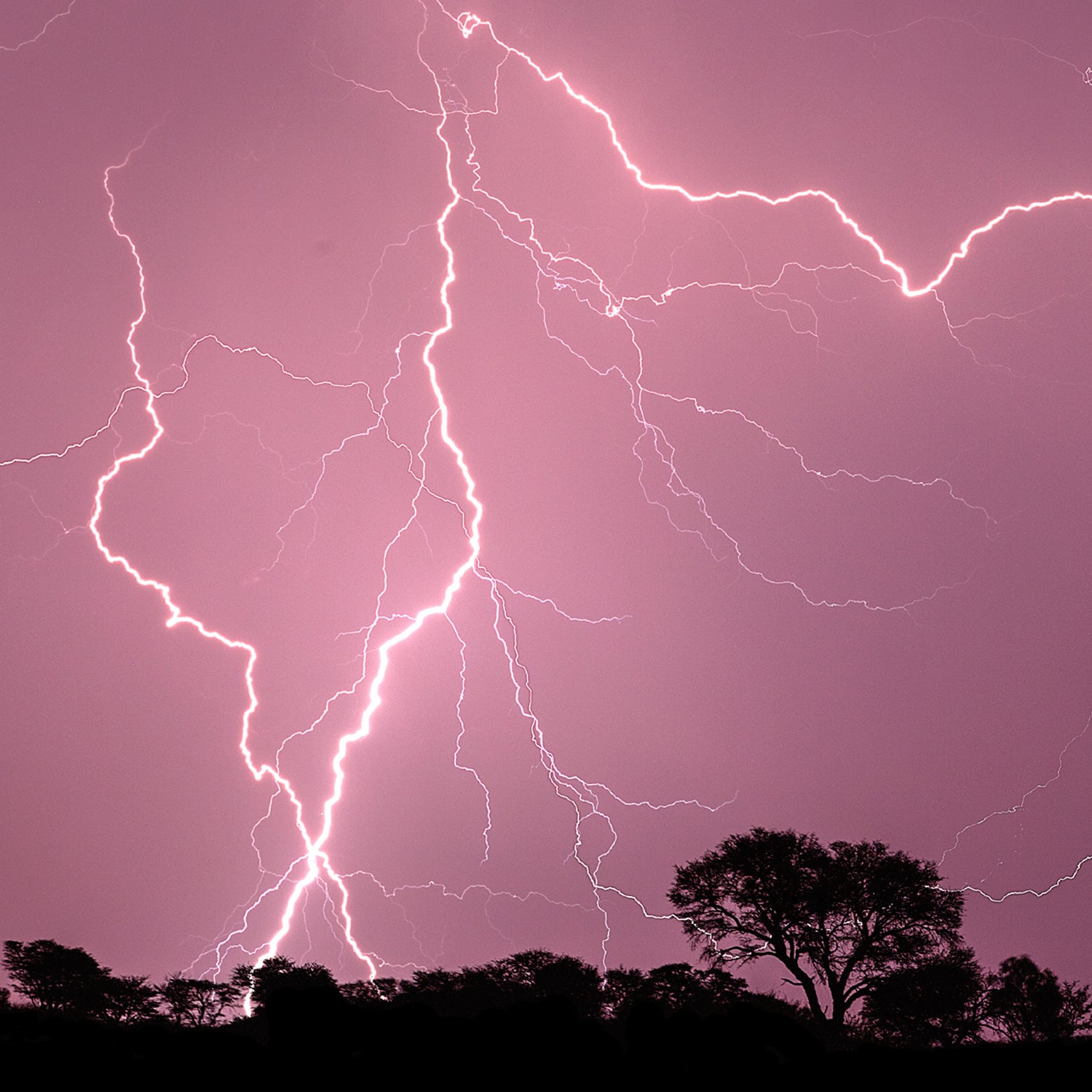Richard Kithil, head of the , says lighting has its own agenda. ŌĆ£It is entirely capricious, random, and unpredictable. Man’s attempts to fit lightning into a convenient box, with codes and standards to describe its behavior, are a best guess,” he told me.
Kithil may be right, but after years of work, NASA has finally pinned down some firm data on lightning storms. The information comes from a particularly unlikely sourceŌĆöa weather satellite launched in 1997 with a supposed three-year lifetime. But NASA’s ┬ĀdidnŌĆÖt quit in 2000 and instead provided researchers at the space agency with 16 years of data to analyze. In an upcoming paper in the , the team describes crunching the data and figuring out which parts of the earth see the most lightning flashes each year.
ŌĆ£Better understanding of lightning activity around the world enables policy makers, government agencies, and other stakeholders to make more informed decisions related to weather and climate,ŌĆØ says the Lightning Imaging SensorŌĆÖs project scientist, Richard Blakeslee. To that end, NASA is aboard a 20-year climate-observation tool this October.
Until then, this data represents the best knowledge we have about lightning on earth. Here are the worldŌĆÖs 10 biggest lightning hot spots.
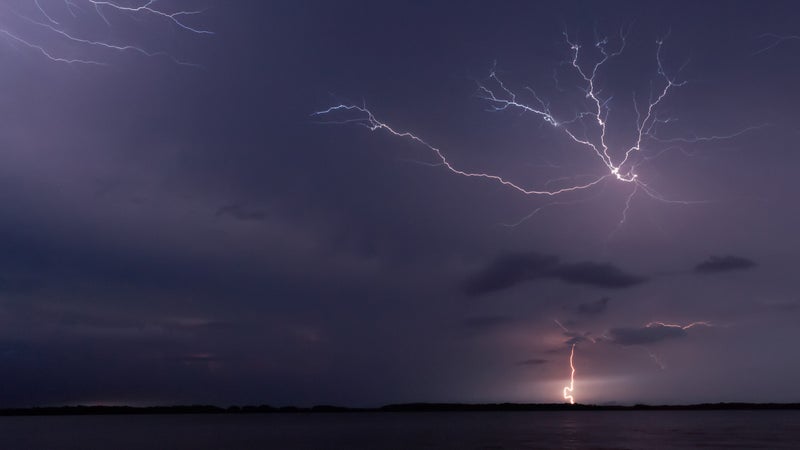
1.┬ĀLake┬ĀMaracaibo, Venezuela
232.52 lightning flashes per square kilometer per year
This brackish bay on the Caribbean is the kind of place that makes you believe in an angry Zeus. The mammoth body of waterŌĆöit would be South AmericaŌĆÖs biggest lake if not for a tiny inletŌĆöis the perfect place for lightning strikes, with storms almost nightly. When the warm air off the lake meets the cool winds from the Andes, it sets off what locals call the Never-Ending Storm of Catatumbo. The storms are so dramatic, theyŌĆÖve been used by ships for navigation for centuries and to offer visitors prime views of the show.
ŌĆ£One of the most interesting aspects was to discover that the place with the most lightning on Earth is over water, and during the night, opposing the general behavior of more thunderstorm development during the afternoon and over land,ŌĆØ Rachel Albrecht, a researcher at the University of S├Żo Paulo and the paperŌĆÖs lead author, .
2. Kabare, Democratic Republic of Congo
205.31 lightning flashes per square kilometer per year
Of the 500 most lightning prone spots in the world, Africa leads the pack with 283 separate areas, and the Great Lakes Region of AfricaŌĆöhome to KabareŌĆöis an epicenter of lightning activity. Asia comes in with 87, followed by South America at 67 and North America with a measly 53. Orangetree Florida, near the everglades, is the most struck part of the U.S., though it ranks just 122nd on .
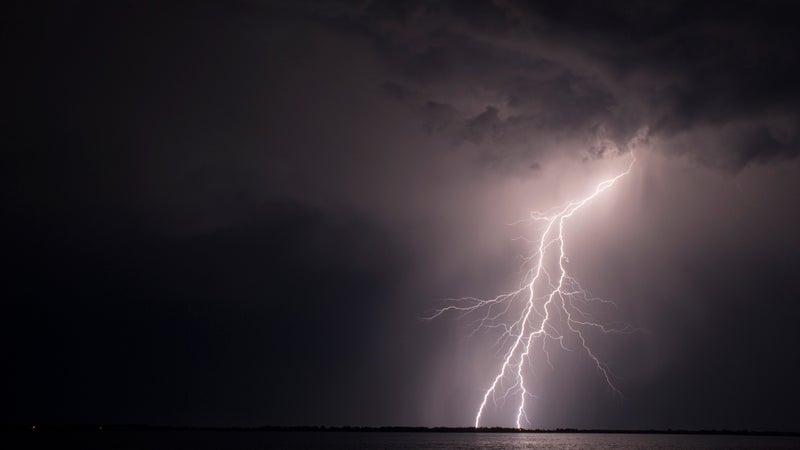
3.┬ĀKampene, Democratic Republic of Congo
176.71 lightning flashes per square kilometer per year
Myth: Lightning never strikes the same place twice. The Empire State Building, for example, gets struck about 20 times a year. And parts of Kampene, in AfricaŌĆÖs Great Lakes Region, get hit all the time.
4. Caceres, Colombia
172.29 lightning flashes per square kilometer per year
Caceras, on the Cauca River, sees more lightning than any other part of Colombia.
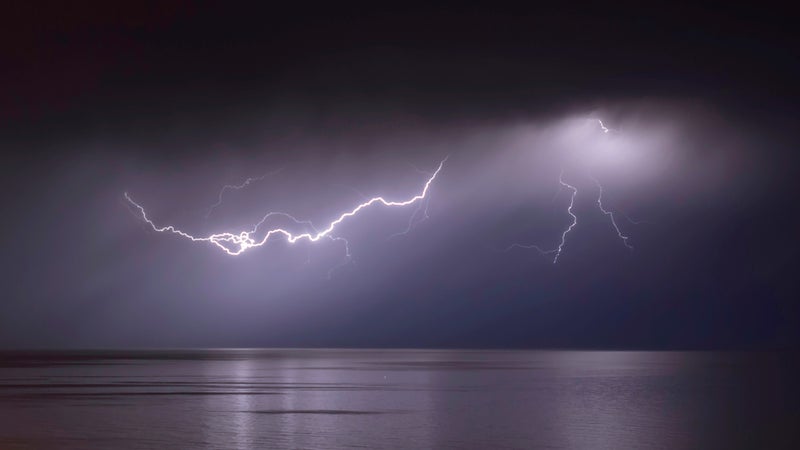
5. Sake, Democratic Republic of Congo
143.21 lightning flashes per square kilometer per year
Africa has six of NASAŌĆÖs top ten hot spots, and the majority of them are near Lake Kivu, in between the Congo and RwandaŌĆölike SakeŌĆöand the other massive lakes along the East African Rift Valley.
6. Dagar, Pakistan
143.11 lightning flashes per square kilometer per year
Dagar, a mountainous part of Pakistan near the Afghan border, sees so many thunderstorms because it sits at the intersection of the westernmost Himalaya and the Indus River plain.
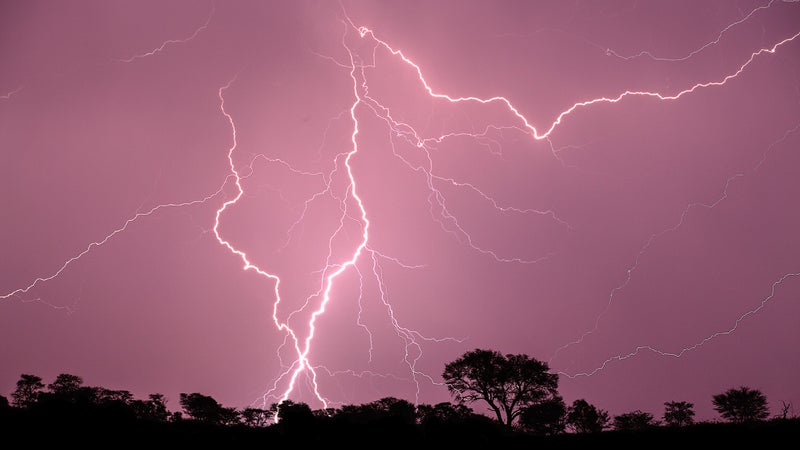
7. El Tarra, Colombia
138.61 lightning flashes per square kilometer per year
At any given time, there are about 2,000 thunderstorms raging across the globe and 100 lightning strikes to earth per second, according to the NLSI. Lightning is more common at higher altitudes and near the equator, which explains why ColombiaŌĆÖs El Tarra is number seven on the list.
8. Nguti, Cameroon
129.58 lightning flashes per square kilometer per year
Nguti, according to the paperŌĆÖs authors, sees so many thunderstorms because consistent cool sea breezes from the nearby Gulf of Guinea meet hot air rising from the baked earth at this inland Cameroon spot.
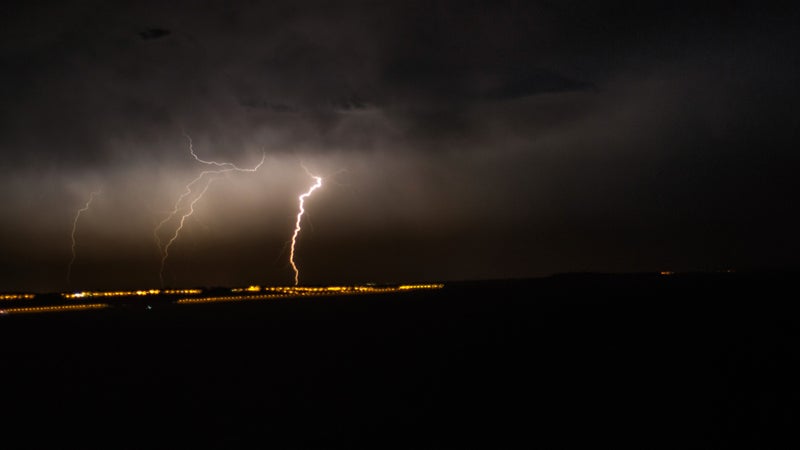
9. Butembo, Democratic Republic of Congo
129.50 lightning flashes per square kilometer per year
Butembo, in the DRC, is in AfricaŌĆÖs Great Lakes regionŌĆöa swath of the continent long known for thunderstorms.
10. Boende, Democratic Republic of Congo
127.52 lightning flashes per square kilometer per year
Until NASA completed this research, scientists assumed the Congo Basin (which includes Boende) was the lightning capital of the world. During a lightning storm, ŌĆ£no place outside is safe and no place can be made safe,ŌĆØ says Kithil.


